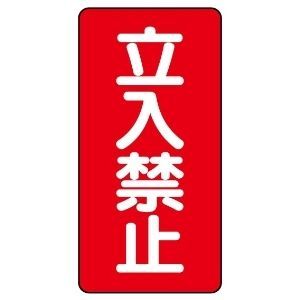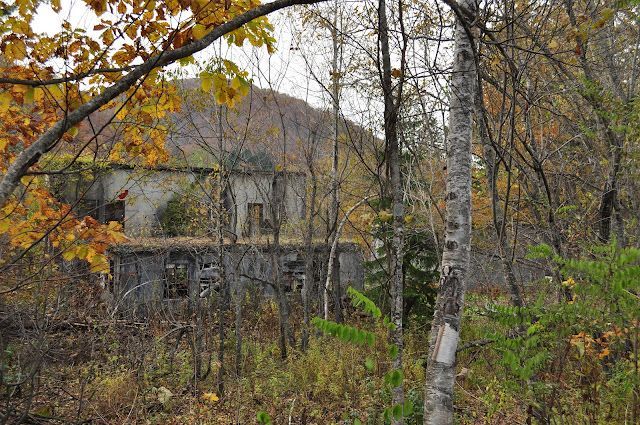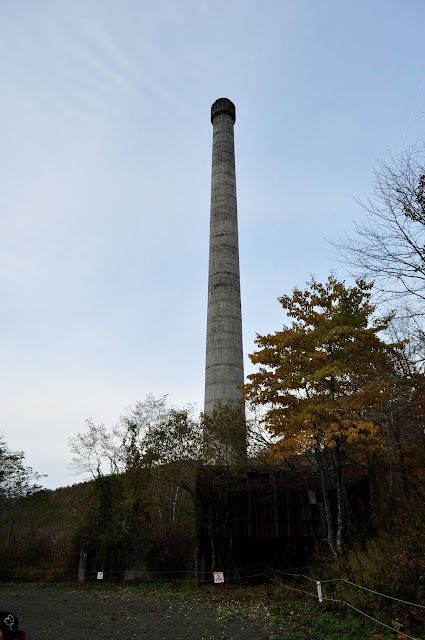Week 12
I had read, somewhere in the vast hole of the Interwebz, that somewhere in the general vicinity (which in Hokkaido is a lot bigger than the rest of the world's 'general vicinities') of Yubetsu, there was a town lost in the woods, a town that once upon a time had thrived on the frontier-tastic enterprise of gold mining, a town that mined every last nugget of gold and silver from the ground, a town that, in 1973, was declared to have No Further Purpose — a town that, ever since, has laid bare and quiet and is quietly surrendering to the elements. This town is called Konomai, and it sits at the end of a valley on a road that almost no one uses these days. Google can still mark it on their Maps, but their search engine only pulls up a blog written by an intrepid explorer, a brief Wikipedia article and a number of Quick Facts sites, the latter two saying much the same things: that in the 1940s, there were 13,000 people there but that by 1973 all of them were gone, the gold all dried up.
I figured, what better weekend than that before good All Hallow's Eve to go exploring for ghost towns?
Nicole and I mounted our trusty steed (namely, Lil'-P-for-Penelope) and rocked off towards what, we weren't quite sure. We saw a sign marked 'Konomai, this-a-way,' and pulled off the main road, passed some public housing and a tremendously large graveyard (foreshadowing?), and plunged into the mountains.
The road took us first up into a pass, switchbacks zig-zagging up the mountainside like some thread holding the mountain together at the seams. Every now and again we saw a sign covered in very inflammatory markings, lots of exclamations marks and red writing, but we couldn't read it; and like most of the other road signs in Hokkaido, it probably only applied to wintertime anyway. We counted down the distance to the town, which still appeared on the old rusty blue signs overhead, indicating Konomai: 16 km, 11km, 9km, before stopping altogether.
The last sign we saw was at the saddle of the pass, where there was what appeared to be an abandoned parking lot featuring a tree with the reddest leaves I believe I have ever seen in my life (and keep in mind that the Flag of Canada features pretty boldly a bright red leaf). The sign appeared to say something like, "You have been driving for a while, and I can't help but imagine that climbing all of these switchbacks and taking in the scenery has made you very tired, so if you'd please be so kind as to avail yourself of this parking lot and, respectfully speaking of course, take a little rest, that would be like super awesome of you and would probably even prevent an accident," in keeping with the Japanese tradition of "if you say it in as many words as possible that makes it more polite." We refused to avail ourselves of this parking lot. Don't never let no sign tell you whatta do.
The other side of the pass being, as many passes are, entirely downhill, and Penelope running a little low on gasoline, I shifted into neutral and bombed down the switchbacks, my imagination transporting me into some fantasy of being an ultra-cool dude on an ultra-cool longboard, the kind of guy maybe with dreadlocks, with an impossibly meta t-shirt, a t-shirt that might say, PRINTED TEES ARE FOR SQUARES; the kind of guy that psychosomatically can't bring himself to care too much about something, so deep-seated is his oh-so-chill nonchalance (which, he might inform you, means literally 'the state of not getting heated,' which only reinforces how earth-shatteringly cool he is).
By and by we came to the bottom of the pass, putting Penelope's engine back at the metaphorical reins and taking off through the woods again. The windows were closed but you could almost feel the sharpness of the air, the stillness through which we sped, the little gusts of wind that came down over the mountains and tugged at the leaves, peeling the clothes from the trees not unkindly, like lovers in the nighttime. Across so many discarded vestements we hummed, like a classy sports car in a commercial, engaging ourselves fully in the autumn, the Spirit of the Harvest or of Butternut Squash or Thanksgiving or whatever coming down upon us, nestling into this valley like a hammock, tying its scarf a little tighter and sipping on whatever seasonal tea and/or coffee Starbucks is peddling this year.
We rounded a bend looking over a gradual incline onto a fiery mountainside, and smack in the middle of the vista, rising out of the earth like a decidedly human middle finger to nature, was a gargantuan chimney, towering above the trees, asphalt gray against the background. It was a jarring sight, this piece of human industry staring us down — and indeed it did feel, almost, like it had turned to look at us as we came round the mountain, the lone spot of movement in the forest. We closed with the thing, the sheer enormity of this smokestack becoming more and more apparent to us as we neared. At what appeared to be a cut-off, we parked Penelope behind some bushes and proceeded on foot. There was a bright red sign, but we're foreigners and we couldn't possibly be expected to read it, right? It being all Japanese and what have you.

I don't know what that means. I think it means 'stand up and enter; it is forbidden to stop now,' as in, 'please keep going you are so close to the gold mine of creepiness (both figuratively and literally) of the Okhotsk.' It didn't take a basic knowledge of Japanese characters, however, to understand the other sign, which featured a fearsome-looking Ezo Bear and stating what I can imagine ran along the lines of 'okay look if you're going to go in, and I know you are, just keep in mind that there are like tons of bears all over the place around here, so make some noise or bring some bear bells or something because the last thing we need on our hands is some foreigners getting eaten.'
So, speaking loudly, we made our way up the path, the chimney our Star of Bethlehem leading us to, I guess the Baby Jesus of the gold refinery? The manger long since abandoned, Christ come and gone over the course of the last forty years, the inn at which Joseph and Mary were turned away crumbling like the houses that we found all around us.
And indeed, it was just that quickly that we found ourselves in the midst of the refinery's little complex, for we had been paying so much attention to the chimney ahead that when we looked back down and into the forest, we discovered on all sides of us other buildings, half decayed, overgrown with plant life, quietly being reclaimed by nature. I don't know that I can, in as few words as I care to, adequately describe just quite what the buildings looked like any better than the pictures I took, so here are some pictures.



What the pictures don't really convey is the sense of emptiness, almost of loneliness, of the place. When I think of old abandoned places, what comes to mind is often old ruins, where one can't really detective out the meanings of things; or alternately old buildings upkept and repurposed, like old forts that are now museums or attractions of their own. Here, in Konomai, the only evidence of any human interference are the signs barring entrance; but the place is not so much taken back by the forest that you can't close your eyes and see, in the image imprinted on the insides of your eyelids, a time when everything here still functioned. That you can't see the smoke still breathing, heaving into the atmosphere, that you can't see the trucks coming down the path, that you can't see the insides of rooms still full of tables and chairs and enterprise. That you can't still see glass in the windows, stained with soot, that you can't see workers smoking cigarettes, eating lunch, counting the hours left in the day.
But Konomai, today, sits empty and still and silent, and the walls still standing are testament to permanence and solidarity. These walls stand up day and night, they stand through the snows of winter and through the heat of summer, they stand as the bears wander across them, they stand as the wind sighs languid through the trees. Change, here, is something on the scale of years, something that you can really only see through a National Geographic Channel time-lapse. Konomai has become, forty years after it was abandoned, a part of nature, moving on nature's scale and playing by nature's rules.
I know it makes very little sense, but I have this idea in my head that whatever isn't really happening around me isn't happening at all. I understand that everyone else in rest of the world really are going about their lives, but their paths being entirely separate from mine seems to indicate that they're not happening at all, as if the world materializes around me and fades out of existence as I move on. I know that it's madly solipsistic of me, and I know, consciously, that it's wholly untrue, but my psyche has a hard time conceptualizing it and fusing it with my worldview. But as I fell asleep last night, and as I sit here writing this, I know that there are no people in Konomai, and there have been no people in Konomai for a long time, and the visits of the people who have gone to scope the place, in that Nat Geo time-lapse, would not have lasted even one frame. And yet it exists, and people who worked there are probably still around, but it sits quiet as the grave, a little donation from us humans to nature, gathering moss and vines until the last of the asphalt crumbles and disappears and is forgotten.
Ed. note, 14/9/2021: A couple years after this, I met an older lady in Takinoue who had been to Konomai on a field trip as a young girl. I don't remember much of what we talked about, but she said she'd actually been into the mine, and that she'd never been back since, and didn't know that there were still buildings standing there.
Next
More urbex at the Kampo-no-yado Sounkyo, a semi-destroyed hotel by the side of the road just outside of Kamikawa.
Previous
The first abortive trip up Shari-dake, accompanied by a quartet of Kiwis, ending in a mad rush down the mountainside after hours of beating through the wilderness.